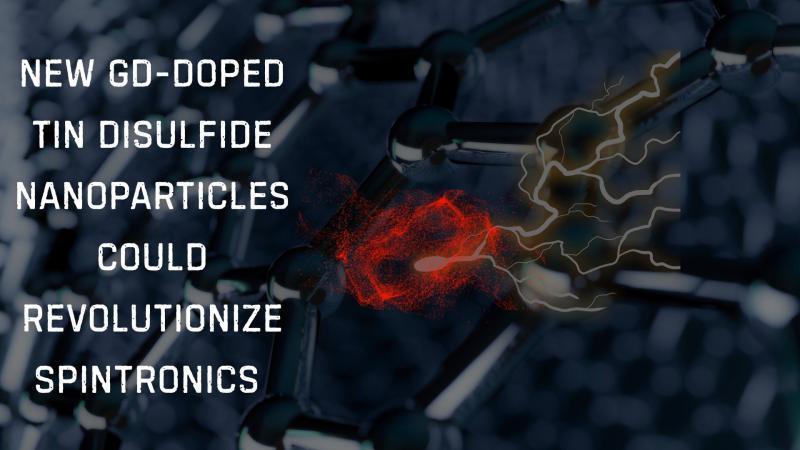
Discovering Spintronics Potential: Revolutionary Gadolinium-Doped Tin Disulfide Nanoparticles
Spintronics, a relatively new and rapidly evolving field, has the potential to revolutionize the way we think about electronics and lighting technologies. By harnessing the spin of electrons, spintronics aims to create more efficient and compact devices, enabling significant advancements in various industries. Recently, researchers at VIT-AP University have made a groundbreaking discovery that could propel spintronics to the next level. In this blog post, we’ll delve into the exciting findings surrounding gadolinium-doped tin disulfide nanoparticles and their transformative properties.
The Quest for Efficient Spintronics
Spintronics has been gaining momentum in recent years, driven by the need for more efficient and sustainable electronics. Traditional electronics rely on the flow of electric current, which generates heat and reduces device performance. Spintronics, on the other hand, leverages the spin of electrons to manipulate data, offering the potential for faster, more energy-efficient devices. However, the development of spintronics has been hindered by the lack of suitable materials that can exhibit both magnetic and optical properties.
Gadolinium-Doped Tin Disulfide Nanoparticles: A Breakthrough
Researchers at VIT-AP University have successfully synthesized gadolinium-doped tin disulfide nanoparticles using a novel hydrothermal method. This innovative approach has led to the creation of nanoparticles that exhibit both weak ferromagnetism and strong optical properties at room temperature. Weak ferromagnetism is a rare phenomenon, typically observed in materials at very low temperatures. The achievement of weak ferromagnetism at room temperature in these nanoparticles is a significant breakthrough, as it paves the way for the development of spintronic devices that can operate efficiently at ambient temperatures.
The Hydrothermal Method: A Key to Success
The hydrothermal method used by the VIT-AP University researchers is a crucial factor in the success of this study. This method involves the reaction of precursor chemicals in a solvent under high pressure and temperature conditions. The resulting nanoparticles have a unique crystal structure, which is responsible for their remarkable properties. The hydrothermal method allows for the precise control of particle size, shape, and composition, making it an ideal technique for the synthesis of high-quality nanoparticles.
The Potential of Gadolinium-Doped Tin Disulfide Nanoparticles
The discovery of gadolinium-doped tin disulfide nanoparticles with weak ferromagnetism at room temperature opens up new possibilities for spintronics research. These nanoparticles have the potential to be used in a wide range of applications, including:
- Spintronic Devices: The weak ferromagnetic properties of these nanoparticles make them an ideal candidate for the development of spintronic devices, such as spin-based transistors, spin valves, and spin-based memory devices.
- Optoelectronics: The strong optical properties of these nanoparticles can be leveraged for the development of optoelectronic devices, such as LEDs, lasers, and photodetectors.
- Energy Harvesting: The magnetic properties of these nanoparticles can be used for energy harvesting applications, such as magnetic refrigeration and spin-based energy conversion.
Conclusion
The discovery of gadolinium-doped tin disulfide nanoparticles with weak ferromagnetism at room temperature is a significant breakthrough in the field of spintronics. The innovative hydrothermal method used by the VIT-AP University researchers has led to the creation of nanoparticles with transformative properties, enabling the development of more efficient spintronic devices. As researchers continue to explore the potential of these nanoparticles, we can expect to see significant advancements in various industries, including electronics and lighting technologies.
Source:






